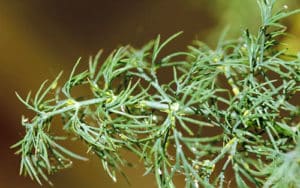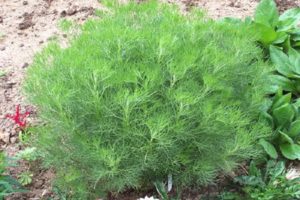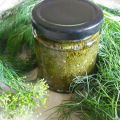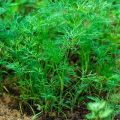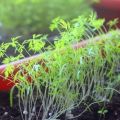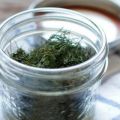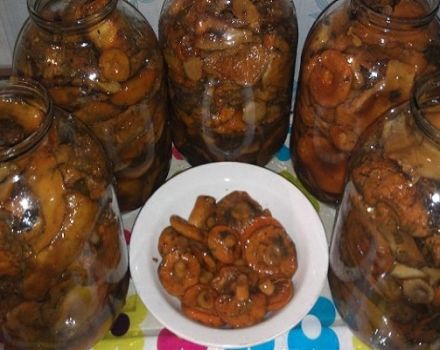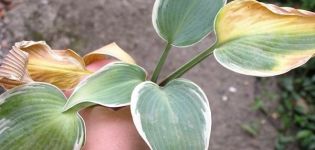Description of the dill variety Hercules, its characteristics and cultivation
Dill Hercules is characterized by an abundance of green mass, which makes it stand out from other varieties. Ideal for growing for sale, therefore it has earned high popularity among summer residents.
Description of the variety
Hercules is a mid-season variety. Full ripening occurs in 40–45 days, flowering of the culture begins 70 days after planting. The rosette of leaves is spreading, erect. The greens are characterized by a strong aroma due to the high content of essential oils. The leaves are green with a slightly waxy bloom. Sowing is done several times a season. Dill is used fresh and dried. Can be grown in film shelters and open field.
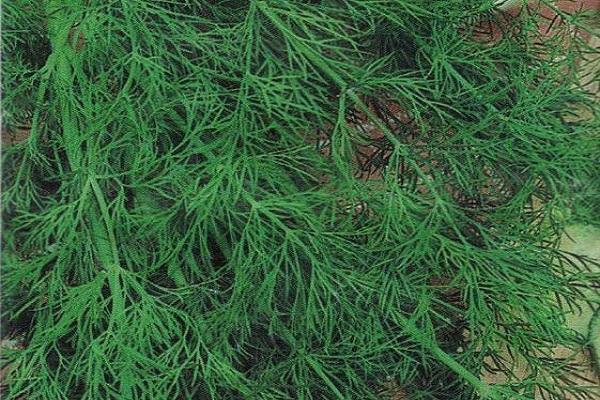
Growing
Since the root system of the variety can be up to 50 cm in order to obtain good yields, it is important to select a sufficient thickness of the fertile layer. Also, the variety loves moisture, so the soil must absorb it well. Before planting, the soil is fertilized with humus or urea.
The ideal time for planting outdoors is late April - early May. It is better to plant multiple times at intervals of 10–20 days. Seeds are planted in grooves at a distance of 3-4 cm. It is important that the rows are 20 centimeters apart. A denser planting will cause side shoots. Before pecking the seeds, it is better to cover the planting site with a film.
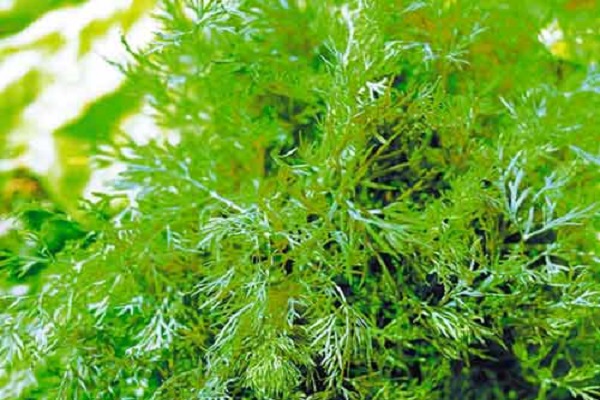
The first shoots appear in an average of one and a half weeks. Immediately after germination, the seedlings should be thinned out until the distance between the plants is 15–20 cm.
To grow seedlings, seeds are planted in special boxes. After a month, they are transplanted into open ground.
Greens are not re-formed after cutting. Therefore, multiple planting is recommended.
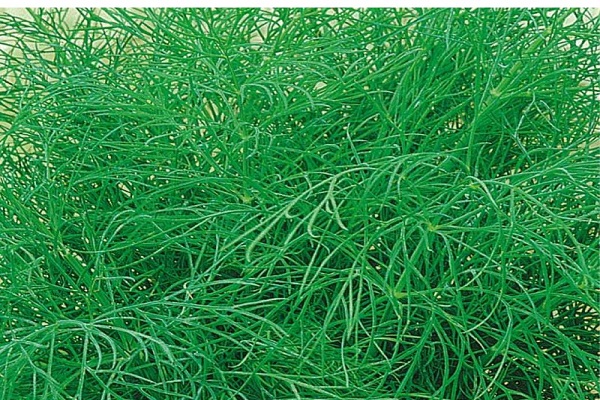
Care features
Caring for the Hercules variety consists of weeding and watering. If possible, you can purchase a phytolamp. With its help, dill grows twice as fast.
Note! Dill is a moisture-loving plant, so watering should be done regularly.
It is necessary to water the plant at least once a week, per 1 sq. m of soil requires 5 liters of water.
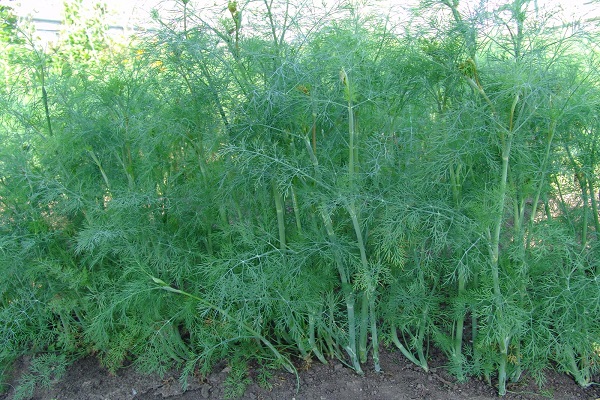
It is important to monitor the emergence of weeds and remove them immediately, until the plants have 3-4 leaves. After that, the growth of dill is more intensive, and the weeds can no longer fully prevent this.
During the growing season, the crop does not need to be fed with anything, the use of pesticides on greenery is not allowed. In all other respects, the approach is classic - mandatory watering, weeding, loosening.
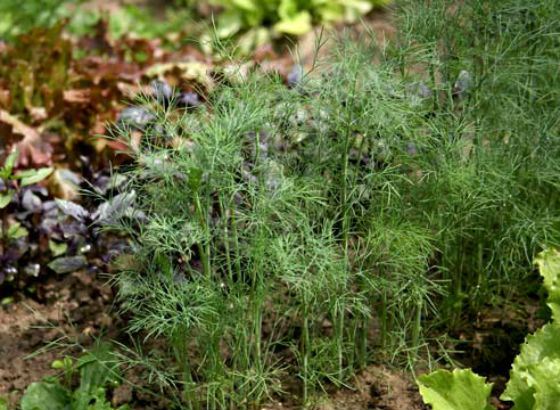
Advantages and disadvantages
The seeds of the variety are quite resistant to frost, even if the weather is unfavorable, gardeners can count on a good harvest. The abundance of green mass makes the Hercules variety the best option for growing for sale, this is confirmed by numerous reviews of summer residents. In addition, the benefits of culture include:
- Endurance of culture. Even with improper care, dill grows spontaneously.
- Minimal risks. Hercules is profitable to grow for sale as it is resistant to diseases and pests.
- Productivity. The culture is characterized by an abundance of greenery.
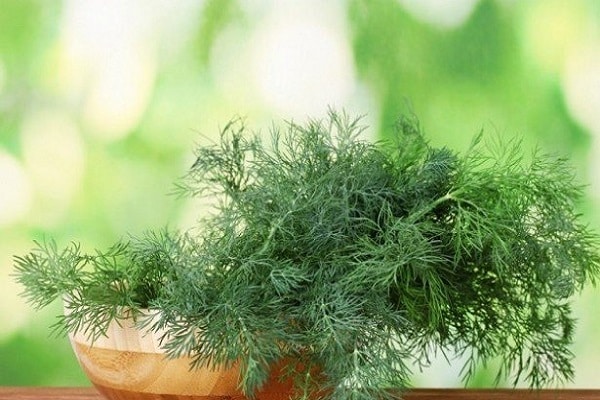
Among the disadvantages is a short fresh shelf life.
It is also necessary to remember that the use of dill is contraindicated in some cases. In particular, people with intolerance to essential oils and those who have low blood pressure.
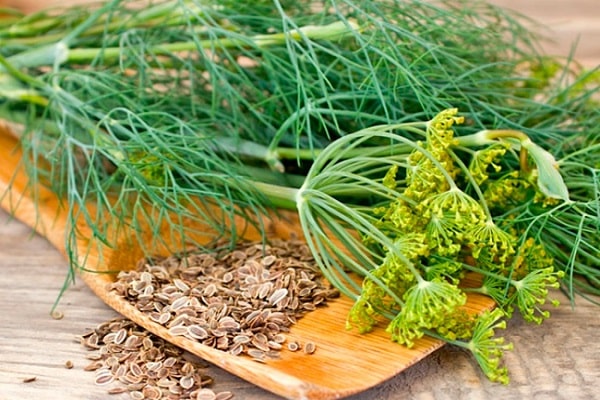
Pests and diseases
Hercules is slightly susceptible to pests. But in some cases it can be affected by diseases, most often by harmful fungi. Such diseases include:
- powdery mildew - a whitish, cobweb-like bloom;
- peronosporosis - in terms of external manifestations, the disease is similar to powdery mildew;
- phomosis - dark, elongated spots on leaves, stems and even roots;
- black leg - the root collar of seedlings is affected (softens, darkens and dies).

Collection and storage
Harvesting is done 45 days after sowing. It is recommended to spray the crop with water several hours before harvest. Then the dill stalks are cut with scissors so that the height from the ground remains within two centimeters.
For fresh storage, finely chopped greens are placed in cellophane and stored at temperatures from 0 to -4 degrees for no more than 10 days. If the temperature is higher than the specified, the greens will start to deteriorate.
For freezing, chopped greens are packed in bags and put into the freezer. In this way, dill is stored for up to 5 months.
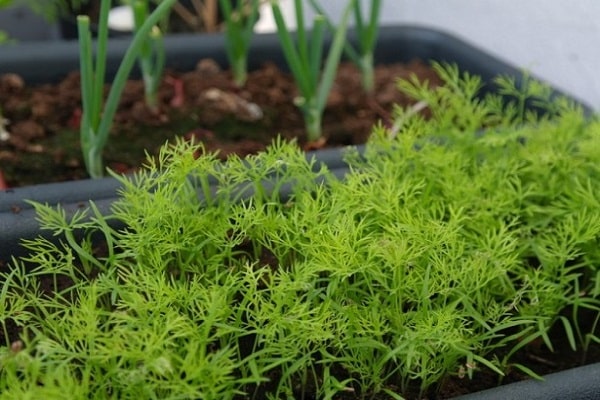
Dill drying Is the most time consuming process. Initially, large umbrellas are cut, then smaller ones, as they mature. The harvested crop is well sorted out, the roots are cut off, after which the greens are washed in cold running water. After the stems are dry, they must be cut into pieces of 5-10 cm, then laid out on paper in the open air. At the same time, they must be periodically turned over and kept out of direct sunlight.
Further, the stems and leaves are collected in bunches, tied and hung to dry. This process takes 3-4 days. Then they are crushed and packaged in a glass container. The relative humidity in the room where the dried dill is stored should be in the range of 40-50%.

